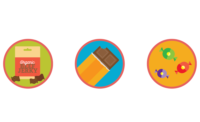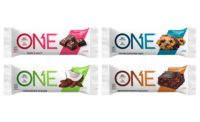Many candy suppliers exist entirely within the world of business-to-business (B2B) eCommerce. Instead of selling directly to consumers, they exclusively offer their products and services to other companies and entrepreneurs, and often for resale. Businesses that specialize in B2B eCommerce can thrive in comfort, especially because a single agreement can be highly lucrative.
However, business owners do not need to limit their operations to one type of trade. Plenty have found success in operating a single website for both B2B and business-to-consumer (B2C) eCommerce, and you could as well. You simply need to learn the right knowledge on the differences and commonalities, then apply it to your practices. Below are some insights to how candy suppliers can successfully run a B2B and B2C eCommerce website.
1. Select an eCommerce platform designed for both types of eCommerce
As discussed in a previous article, the eCommerce software you choose for running your online store defines how much you can do with it. Some platforms are better suited for B2C users, while others cater specifically to B2B clients. To maximize your business’ potential, you must look for a platform that can provide you with advantages in both fields. Otherwise, you will be missing tools and benefits, which will restrict you in your ability to serve these distinct audiences in the same website.
For starters, growing your audience to include both retailers and consumers will almost certainly change the size of the store. Your platform should be scalable, meaning it offers the ability to list unlimited products and create unlimited categories. Moreover, opening to individual consumers hopefully means far more traffic and far more transactions. Your website hosting should be equipped to handle a high volume of both, and the platform should not handicap your growth with any maximums on either. In short, the platform should want your business to grow and provide ample space and opportunity to grow when desired.
2. Understand the mindset of B2C customers
B2C customers have different needs from B2B customers, and you will need to learn what makes the average consumer tick if you want their business. Perhaps the most significant difference is that B2B customers will definitely choose between you or another candy supplier. They must if they want to sustain themselves, and there are no alternatives.
B2C customers, on the other hand, need to be persuaded on two fronts. You must convince them to use their money, which almost everyone wants to conserve, to buy candy, a product that barely anyone needs to survive. Then, you must convince them to buy candy from you. Your competition includes other online retailers, certainly, but more threatening still are local grocery stores, pharmacies and dedicated candy shops. On one hand, you must activate their impulses. On the other, you must persuade them to wait for an order that could take days to arrive.
You must find ways to convince them with the product descriptions that your goods are worth the cost in money and time. Often, this means distinguishing your offerings from local stores. Sheer quantity is one viable path to B2C success. Online stores can have more room for more unique products than the largest candy shop in town. Alternatively, catering to a niche also works. When a specific item is not available in any store, people who crave it will look online. Understanding this mindset should inform your approach to succeeding in the B2C world.
3. Create unique shopping experiences with customer segmentation
As you can see, opening a B2B website to B2C clients means having to cater to two wildly different audiences on the same website. For this reason, the ability to create customer groups is by far the most essential feature a B2B/B2C owner needs from their platform. With this tool, store owners can develop distinct shopping experiences for distinct groups. They can reserve entire categories for specific visitors and conceal them from others, or present different text on the same page.
Business owners could even build two different versions of a page for the same product. Imagine, for example, that you want to sell a 12-piece chocolate bar on your shop. B2B users could see options for purchasing those bars in bulk at wholesale prices on their version. In the B2C version of the same page, visitors can buy a single bar, or several, at regular prices. Either way, you would be personalizing the experience so that it meets their needs exactly.
4. Learn how to market to B2C audiences
As a candy supplier, you may be fluent in the marketing language to which business customers respond. As well-versed as you may be, though, those go-to practices may not translate well to winning over consumers. After all, a single business customer may consist of multiple people taking days or weeks to make decisions. Consumers usually think about themselves, or perhaps a gift recipient, and often act on impulse.
These two mindsets are almost exact opposites of each other, and they each require a radically different approach from business owners. As a result, you should apply the principle of customer segmentation to marketing. Different strategies should be developed for both retailers and consumers. One example is offering limited-time offers, special discounts, and loyalty programs. These programs are all largely ineffective in the B2B world, but they can make a major difference in B2C traffic and sales. You would have to make sure that only B2C customers receive promotional emails of this nature.
5. Optimize your website based on data and feedback
Customers can be impulsive, which means they may drop out over the smallest inconveniences. Think of all the times you abandoned a website while shopping online because pages loaded a second too slowly. People often leave because of issues like clunky navigation and unintuitive layouts. Sometimes, they even reach the end of their journey only to leave because the checkout process is just a tad too long. Once they abandon the site, they will rarely return to give your store a second chance.
Catering to B2C customers is an ongoing process, as is fine-tuning the website to create a better shopping experience. Collecting data on consumer behavior is extremely important because it shows where improvements could be made. When you catch something that does not work, you should resolve it quickly or risk bleeding more customers. When you see something that works well, you may want to see if more of it produces even better metrics. Any changes you make should also benefit your mobile eCommerce guests. Your website will function quite differently on a cell phone screen, but it should function just as well as it does on a computer screen.
Finally, you should also listen to consumers just as attentively as you would to business clients. Their insights may prove valuable and the effort alone may win their loyalty.
Transitioning to consumer sales
A candy supplier’s transition from a strictly B2B eCommerce operation to one that also handles B2C transactions can be difficult on the outset. You would need to relearn much of what you thought you knew about running a business and attracting customers. You may even need to transition the site to a new eCommerce platform just to make the required changes. Remaining in your comfort zone may start to seem safer and easier.
However, this time of uncertainty can also be highly exciting. The financial rewards are potentially astounding: B2C transactions are often individually smaller than B2B ones, but the sheer volume can result in greater overall profits. On top of that, there is the thrill of taking a bold new direction for your business, of unmooring from the dock and sailing to new waters. When it works — and with the right knowledge and practices, it can work — the pay-off can be quite sweet.




